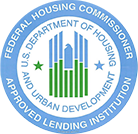When taking a look at market trends, 2018 is anticipated to remain a favorable economic environment. [1] Freddie Mac’s Economic and Housing Research Group issued this positive forecast and projected the following market trends.
The market trends that will likely drive the mortgage market are as follows:
Purchase Mortgage Volume Increases
Purchase money mortgages are likely to see an increase in volume resulting from, increases in home prices as well as home sales.
Inventory problems will remain a hindrance, but it appears inventory is closing on the current level of demand. The bottom-line: Freddie Mac predicts new and existing home sales to increase by approximately two percent in 2018.[2]
The reality is that the mortgage market has been shifting imperceptibly towards a market dominated by purchase money mortgages. The forecast from Freddie Mac expects the portion of the mortgage market for refinances to decrease to about 25%.
Refinance Activity Slows
The pace of refinancing has been quite energetic for several years as borrowers take advantage of the current rate environment. However, should rates sustain a significant increase, refinancing to benefit from a rate reduction will basically dry-up. In fact, it is speculated that a sudden dramatic hike in rates could essentially eliminate this portion of the refinance market.
Even if rates change little, refinancing with a 30-year conventional mortgage should be the lowest pace seen in many years.
There is a bright spot in the 2018 refinance market. Many borrowers are still swapping a Federal Housing Administration (FHA) to conventional financing to eliminate their ongoing FHA insurance premiums (MIP’s).
More Homeowners Tapping into Their Home’s Equity
As rates remain low, homeowners take advantage of the low-cost of the funds available in their home’s equity. Rising home prices allow borrowers to tap into their home equity to consolidate outstanding debt, fund education, and finance remodeling projects. A cash out-transaction is accomplished by obtaining a) a refinance (to a larger loan), b) a second mortgage or c) a Home Equity Line of Credit (HELOC).
The Recent Tax Bill Impacts
The headline-making tax reform legislation recently signed into law is likely to dramatically impact the priciest real estate across the country, along with all taxpayers.[3] However, every taxpayer will feel its impact.
For example, mortgage interest rate deductions have been halved from a maximum of a $1 million mortgage to $500,000 for those couples filing taxes jointly. The new law severely weakens the incentives once offered by the tax law, especially for higher priced homes.
In fact, high-income homeowners may not be able to benefit from the exclusion at all. In accordance with the new law, this exclusion is phased-out for joint tax filer’s who have adjusted gross incomes that surpass $500,000.
The United States is home to 3.7 million U.S. households with annual property tax bills in excess of $10,000. Given that the new law disallows the deduction of property taxes that exceed $10,000, these higher taxed properties may experience a price adjustment due to the recent tax law changes. [4]
Don’t Forget About the Millennials
The Millennials are considered the largest generation in the history of the United States. Most are approaching their mid 20’s to 30’s as they settle down and want to start a family. It is predicted that the millennial generation could account for 43% of the home-buyer market by the beginning of 2019. The Millennial share of the marketplace could potentially translate into an enormous amount of additional homes.
[1] http://www.freddiemac.com/research/
[2] http://www.freddiemac.com/research/
[3] https://www.bloomberg.com/news/articles/2017-11-02/pricey-home-markets-from-greenwich-to-l-a-seen-hit-by-tax-plan
[4] https://www.bloomberg.com/news/articles/2017-11-02/pricey-home-markets-from-greenwich-to-l-a-seen-hit-by-tax-plan








